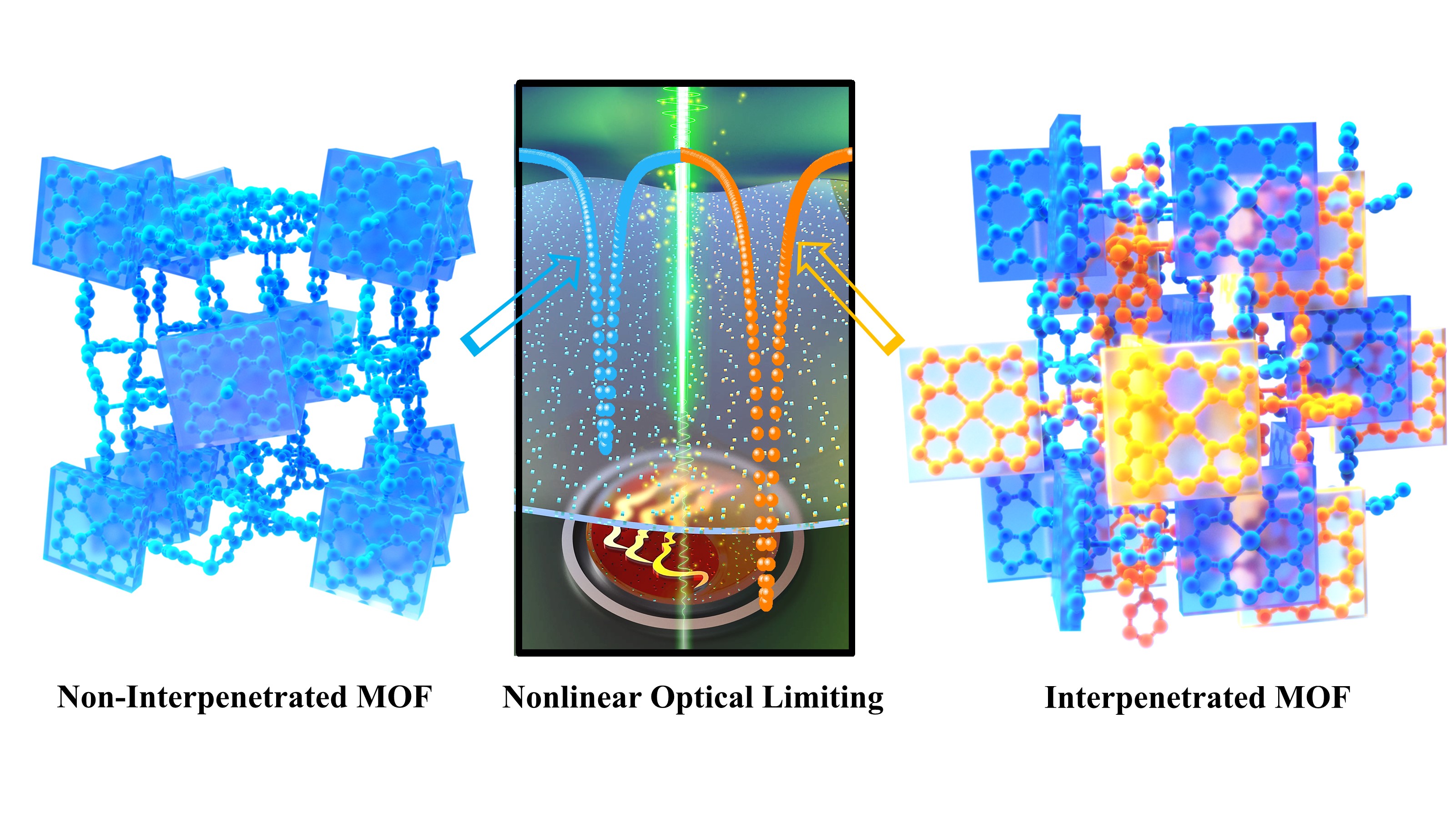Third-order nonlinear optical (NLO) materials have aroused great interest because of their significant applications in optical switching, optical limiting (OL) and mode-locked laser systems, etc. Particularly, NLO materials with OL property can be used to protect human eyes and sensitive optical instruments from laser induced damage.
Recently porphyrin based metal-organic frameworks (MOFs) have been developed to study their OL performance by introduction of tunable metallized porphyrinic ligands, adjusting morphology, and loading guest molecule or doping carbon materials in MOFs, but structural interpenetration in MOFs structure has not been realized to enhance their OL effect.
In a study published in J. Am. Chem. Soc., the research group led by Prof. ZHANG Jian and Prof. GU Zhigang from Fujian Institute of Research on the Structure of Matter, Chinese Academy of Sciences, reported a two-fold interpenetrated MOF [Zn2(TPyP)(AC)2] and a non-interpenetrated MOF [Zn3(TPyP)(H2O)2(C2O4)2] constructed from 5,10,15,20-Tetra(4-pyridyl)porphyrin (TPyP(H2)) ligand (AC = acetate, C2O4 = oxalate).
The researchers found that the [Zn2(TPyP)(AC)2] achieved excellent OL performance with giant nonlinear absorption coefficient (β = 3.61×106 cm/GW) and large third-order susceptibility (imaginary parts, Im χ(3) = 7.73×10-7 esu), which was much better than [Zn3(TPyP)(H2O)2(C2O4)2] (β = 1.12×106 cm/GW, Im χ(3) = 2.36×10-7 esu) and other reported OL materials.
They dispersed the MOF nanosheets into polydimethylsiloxane (PDMS) matrix to form highly transparent and flexible MOFs/PDMS glasses for practical nonlinear optical applications. The [Zn2(TPyP)(AC)2]/PDMS with excellent flexibility and endurance displayed higher β than that of [Zn3(TPyP)(H2O)2(C2O4)2]/PDMS. The OL response can be optimized by adjusting the concentration of [Zn2(TPyP)(AC)2] in PDMS matrix and the types of matelloporphyrinic groups.
Besides, the researchers carried out density functional theory (DFT) calculations to understand the origin of NLO properties of [Zn2(TPyP)(AC)2] and demonstrated that the abundant π-π interaction between two individual frameworks in interpenetrated [Zn2(TPyP)(AC)2] increased the electron delocalization/transfer and boosted the NLO response in [Zn2(TPyP)(AC)2].
This study not only opens a new avenue to enhance OL performance by the construction of interpenetrated structures, but also provides new approach for the preparation of transparent and flexible MOF composites in nonlinear optical applications. This is the first study to enhance OL effect by building interpenetration in MOF materials.

Illustration of the interpenetrated and non-interpenetrated porphyrinic MOFs for NLO performance(Image by Prof. ZHANG’s group)
Contact:
Prof. GU Zhigang
Fujian Institute of Research on the Structure of Matter
Chinese Academy of Sciences
Email: zggu@fjirsm.ac.cn